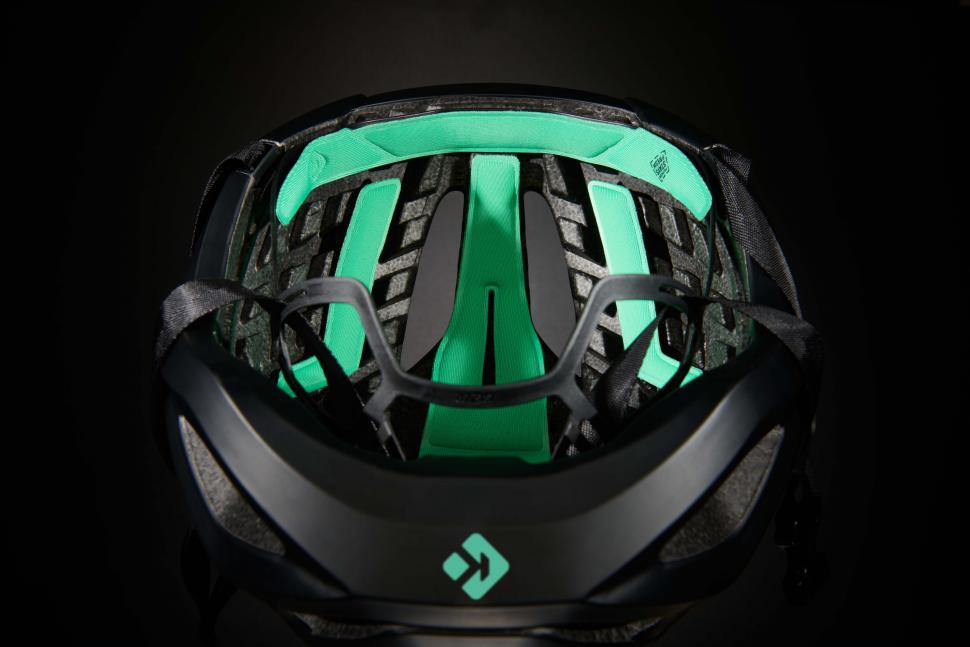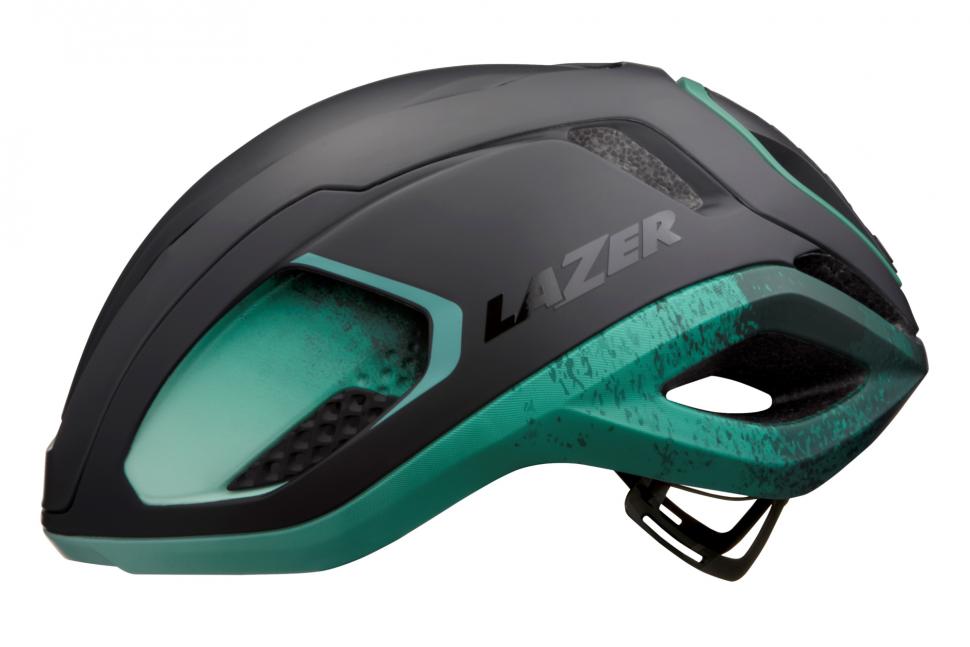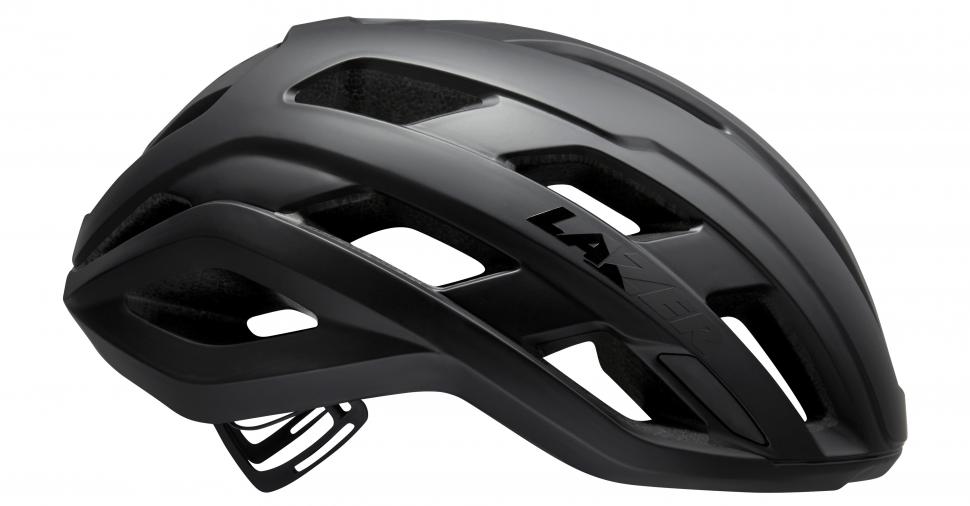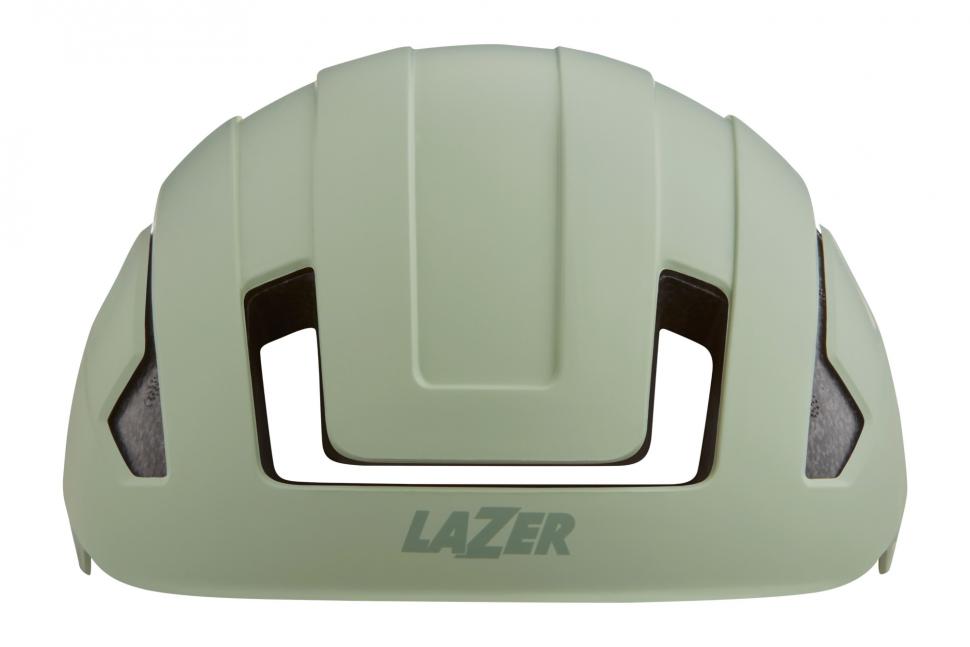- News
- Reviews
- Bikes
- Components
- Bar tape & grips
- Bottom brackets
- Brake & gear cables
- Brake & STI levers
- Brake pads & spares
- Brakes
- Cassettes & freewheels
- Chains
- Chainsets & chainrings
- Derailleurs - front
- Derailleurs - rear
- Forks
- Gear levers & shifters
- Groupsets
- Handlebars & extensions
- Headsets
- Hubs
- Inner tubes
- Pedals
- Quick releases & skewers
- Saddles
- Seatposts
- Stems
- Wheels
- Tyres
- Tubeless valves
- Accessories
- Accessories - misc
- Computer mounts
- Bags
- Bar ends
- Bike bags & cases
- Bottle cages
- Bottles
- Cameras
- Car racks
- Child seats
- Computers
- Glasses
- GPS units
- Helmets
- Lights - front
- Lights - rear
- Lights - sets
- Locks
- Mirrors
- Mudguards
- Racks
- Pumps & CO2 inflators
- Puncture kits
- Reflectives
- Smart watches
- Stands and racks
- Trailers
- Clothing
- Health, fitness and nutrition
- Tools and workshop
- Miscellaneous
- Buyers Guides
- Features
- Forum
- Recommends
- Podcast
TECH NEWS
 2022 Lazer KinetiCore V INTERNAL PADDING
2022 Lazer KinetiCore V INTERNAL PADDINGMIPS killer? Lazer launches ‘world’s first fully integrated rotational-impact technology’ for bike helmets
Lazer has revealed its new proprietary KinetiCore technology on six of its helmets, with unique controlled crumple zones that are designed to protect against rotational impacts. It's also the first technology on the market that achieves this while being directly integrated into the EPS of the helmet itself, with Lazer claiming this makes it more protective and lighter with improved airflow. It also uses less plastic than previous helmets without KinetiCore due to the strategic pattern to allow for crumple zones for bonus environmental points.
Today Lazer is revealing its new KinetiCore technology across six new helmets, and not all of them are top-of-the-range: the top aero Vento, mid-range Strada and urban CityZen as well as two kids helmets (P’Nut and Nutz) and a MTB lid will all have the new tech included.
The Belgium-based company has been working for over a decade to create the new technology that is designed to offer “next-level brain protection”, without any compromises on performance. Lazer claims KinetiCore is, “a new benchmark for lightweight, protective helmets that are available for every type of rider.”
Previously MIPS has dominated the market for protecting against rotational impacts, with its low friction layer that allows 10-15mm of relative motion between the helmet and the head in all directions. Lazer is not the first brand that has attempted to compete with MIPS though; in 2019 Bontrager brought out its WaveCell technology, however a number of our reviewers have commented that helmets featuring WaveCell were heavy, lacking ventilation or both.
What is KinetiCore?
Lazer explains that it began by assessing how different types of impact affect cyclists, using advanced simulations to examine what happens to riders’ skulls and brains in the event of direct and rotational impacts.
“The breakthrough moment came when the team examined cars’ crumple zones,” says Lazer. “This inspired them to build cone-like crumple zones on the inside of the helmet, designed to break under impact and dissipate energy away from the cyclist’s skull.”
KinetiCore consists of these ‘controlled crumple zones”, which are a set of EPS foam blocks built into the helmet designed to buckle in the event of direct and rotational impact, redirecting energy away from the brain.
“They are individual but work together synchronously to cushion your head from impact,” says Lazer. If just one block is broken, Lazer says you can visually see that the helmet needs replacing.
With the advanced protection technology built into the helmet rather than added on, Lazer says no compromises have had to be made.
Lazer explains that it has been able to design each helmet to its own specification, which means it can increase ventilation and improve airflow. As KinetiCore is integrated into the helmet it reduces the overall weight too, and less plastic is used in the construction compared to previous models.
> The 10 best lightweight high-performance cycling helmets for 2022
Now for some specific details on the new road helmets that feature the new technology…
Vento, £259.99
The Vento KinetiCore is Lazer’s latest premium aero lid, taking over from the Bullet 2.0 MIPS.
Protection wise, the Vento has received independent tester’s Virginia Tech’s top 5-star (out of five stars) rating, while also boasting a lower weight, increased ventilation and improved aerodynamic performance.
Lazer says it has reduced the frontal surface and drag when the Vento KinetiCore is in a 15 degree sprint position, increasing the aerodynamic performance by a claimed 2.3% compared to the Bullet 2.0 MIPS.
> Review: Lazer Bullet 2.0 Helmet
The Venturi ventilation system with large inlets and smaller outlets, according to Lazer, draws air in where it’s needed most, providing a claimed 5.4% increase in cooling efficiency over the Bullet 2.0 MIPS (no lens).
As the protection system is built into the helmet, Lazer has been able to make the Vento KinetiCore both lighter than the previous MIPS Bullet 2.0, by 90g so, and also 70g lighter than the non-MIPS one.
This also means Lazer has used 90g less plastic than it did for the Bullet 2.0 MIPS and 70g less than the Bullet 2.0, which offers some bonus environmental benefits to using the built-in technology too. The Vento KinetiCore weighs in at 290g for the size medium.
For comfort, the floating head band is designed to eliminate potential pressure points from the front of the helmet, as well as aid ventilation.
The retention system is Lazer’s 'Scrollsys' system, which it says has been placed in the optimal aerodynamic position at the back of the lid to improve overall performance. The Scrollsys system adjusts around the entire circumference of the head for a comfortable fit and is said to be ponytail friendly. It has also been designed to be used on the go with just one hand.
Eyewear docking pads have been included for keeping eyewear safe and secure when you're not wearing them on rides.
The Vento KinetiCore is also compatible with Lazer’s new universal 40 lumen LED rear light (£29.99) that can be attached to the rear of the helmet. With a braking sensor built in, the light will start flashing when you slow down to alert other road users.
Strada, £99.99
The Strada is Lazer’s all-round performance helmet, and includes the KinetiCore technology at a much more accessible £99.99 price point. Like the Vento, it receives Virginia Tech’s 5-star rating thanks to KinetiCore’s protection against direct and rotational impacts.
Lazer has trickled down quite a lot of the technology seen in the Vento, including the floating head band for comfort and ventilation, the Scrollsys 360 degree retention system for a secure and comfy fit, compatibility with Lazer’s rear LED for visibility and a design that allows you to securely stow your eyewear when not in use.
While this is not the brand’s aero helmet, the Strada is compatible with Lazer’s aeroshell (for an extra £19.99) which covers the lid for increased aerodynamic protection as well as defence from the elements. It’s available in a slick matte black or hi-viz flash yellow.
The cooling and low benefits of the Strada aren’t as big as on the Vento, but improvements have still been made along with the added protection.
The Venturi ventilation system is claimed to provide a 0.9% increase in cooling efficiency over the Blade+ MIPS.
> Review: Lazer Blade helmet + aero shell
The Strada is 20g lighter than the Blade+ MIPS and is the same weight as the Blade+ with its 290g weight in the size medium.
CityZen, £59.99
The CityZen is Lazer’s commuter urban helmet and it receives a 4-star Virginia Tech rating, which is the highest score a hard shell helmet has obtained. The idea with hard shell helmets is that they are robust and can deal with day-to-day knocks and drops better than road helmets, which makes them better suited to commuting.
Along with the cylindrical blocks of Lazer’s KinetiCore for protection, the ABS outer shell of the CityZen is made from the same materials used in police riot shields. The front vent and side wings have also been cut to optimise flexibility in the event of a crash.
The CityZen provides a 12.7% increase in cooling efficiency over the One+ MIPS and is 100g lighter than the One+ MIPS as well as 60g lighter than the non-MIPS One+ - it weighs 420g for the size medium which is pretty reasonable for urban lids.
Lazer is offering this helmet in a larger size range than a lot of urban helmets, with four sizes available to make it easier to find the best fit for protection and comfort.
Instead of the performance Scrollysys system, the 'Turnsys' system is used and provides an affirming ‘click’ sound when adjusting.
Usefully, you can leave this helmet locked to your bike though the helmet lock hole for convenience.
Does Lazer's KinetiCore technology for improved protection really come without any performance compromises? We have a Vento in for review, so will be sharing our thoughts on this soon...
Anna has been hooked on bikes ever since her youthful beginnings at Hillingdon Cycle Circuit. As an avid road and track racer, she reached the heady heights of a ProCyclingStats profile before leaving for university. Having now completed an MA in Multimedia Journalism, she’s hoping to add some (more successful) results. Although her greatest wish is for the broader acceptance of wearing funky cycling socks over the top of leg warmers.
Latest Comments
- eburtthebike 1 hour 8 min ago
The deterrent effect is almost certainly due to the massively increased likelihood of the offence being detected. As with other crimes, if the...
- Martin1857 1 hour 36 min ago
As a member of the Co-op community (I live in a Housing Co-op) and a bike owner /rider, this is very sad news. We need more Co-ops not less.
- AnotherChrisOnAnotherTrike 1 hour 37 min ago
My EV exceeds the size. It's the smallest vehicle available which can transport my wife's trike (excursions or rescue).
- Dnnnnnn 1 hour 27 min ago
It is sad for the individuals concerned but (and this is a general point, rather than specific to this story), we're much better off overall for...
- No Reply 2 hours 18 min ago
I agree with Pogacar regarding social media. The likes of Facebook, Instagram have done untold damage, especially to the minds of young people....
- David9694 2 hours 23 min ago
Lorry carrying 25 tonnes of beer catches fire on the M11...
- No Reply 2 hours 27 min ago
If you're a cyclist on a road you are public enemy number 1.
- Rendel Harris 2 hours 56 min ago
He advocates only riding mountainbikes solely offroad for ultimate safety, which is great if you're a millionaire of leisure living in Colorado...
- ktache 3 hours 28 min ago
That looks like a fun bike. Frame only, 2 and an 1/2 grand.
- wtjs 4 hours 24 min ago
Fair enough, personal experience may trump (not that one) theory. However, the bonking I have experienced has been due to lack of carbs. Your point...













Add new comment
34 comments
Love the 'diversity' photo's.. very woke; as for these helmet crumple zones, they may work well but given the limited area compared to a standard car crumple zone, the energy being directed away from the head would be minimal.
The fact that you say this shows that they're needed - you're only noticing because it's unusual.
If you're not "woke" is your head in the sand?
Previous comments have shown the racist side to him.
I find the discourse in terms such as "redirecting energy away from the brain" and "dissipate energy away from the cyclist’s skull" worse than useless. The helmet's job is surely to reduce the accelerations (linear and rotational) experienced by the brain, and to spread the load across a larger surface area so as to reduce the chance of penetrating or fracturing the skull.
It's marketing BS designed to confuse the gullible and suggest that helmets reduce the death rate of cyclists, which they can't say because it would fall foul of advertising laws.
Here we go again, this argument is so tired and boring. Wear one if you want, or don't if you don't.
Bla bla bla.
So advertising BS should never be challenged? Don't you think people should be informed before a purchase?
Oh, and if you could please get all those hemet zealots to desist, that would be great.
If you reduce the acceleration experienced by an object then surely said object has received less energy?
Likewise if the helmet absorbs some energy (by compressing) then that energy will not transmit to the skull?
I always take manufacturers claims with a healthy pinch of salt but these particular ones don't seem too outlandish.
Take the case of a blancmange of given mass and velocity. It has kinetic energy equal to its mass times the square of its speed. That energy is doing it no harm.
The blancmange is brought to a halt. It now has zero kinetic energy.
The interval over which the blancmange is brought to a halt does not alter any of the above. However the shorter the interval the greater the acceleration experienced by the blancmange. If the acceleration is too great the blancmange disintegrates.
Instructions unclear - how do I remove blancmange from my (bike) helmet?
For safety - don't! If it saves one blancmange...
Of course most blancmange isn't racing so it's not so common to see it wearing a helmet. And - because of the safety of the Italian cycling infra - most panna cotta doesn't feel the need either.
Your safety is something you shouldn't trifle with.
Either way, you'll get your just desserts.
The helmet suffers damage as a result of a collision. It has taken some energy to cause that damage. The helmet, of course, itself has kinetic energy. The question is whether or not the energy absorbed by the helmet results in a net lower energy to the brain, or whether it's solely about the various decelerations (direct and rotational).
I don't know the answer
I think I see where you're coming from now.
If the helmet absorbs energy by either compressing or twisting then there will be less kinetic energy transferred to the brain/blancmange but technically its acceleration will have been the same?
I have not done Physics since GCSE so apologies if I'm miles off.
Whatever happens, the head/brain starts out at the speed of travel and ends stationary. The idea is to ensure that throughout the transition the brain never experiences a period of acceleration beyond whatever the maximum is that it can tolerate. So overall I just don't see that a discussion in terms of energy is helpful. I can see that it appeals to marketing people.
A very simple answer F=MA
A=Delta V/t2
Increase t, the time in takes for the head to slow down, and you reduce the acceleration and hence the force and therefore energy
A good summary. The next challenge is to remove the heads from the bodies which would allow us to reduce the acceleration even further (for example they could roll for a longer distance) and cause less damage to them.
Someone's forgetting their GCSE physics.
Work done (energy) = force x distance
Lower acceleration (but same total change in velocity) means lower force is applied but over a longer distance (and over a longer time). The total work done is the same.
Thank you. Very well explained.
It's been nearly four decades since I sat in a physics classroom but isn't kinetic energy calculated as half of mass times the square of speed (until you get close to the speed of light when the laws of relativity are used)?
Energy is a relevant quantity here. The blancmange in decelerating is exerting a force on the helmet, and when the helmet fins collapse, this force is doing work on the helmet. The kinetic energy of the blancmange is converted to chemical energy as the bonds holding the helmet material together bend or break, and then into sound and heat.
The trick is to do this work over as long a period as possible, so that the deceleration is reduced, as pointed out earlier.
And the point is that wearing a helmet does not change the amount of kinetic energy at stake, neither does it mysteriously redirect energy away from the head.
Indeed so. Change of energy remains unaltered by the helmet, peak accelerations (hopefully) reduced.
It is, even as you approach light speed. Only if you power yourself by fusing hydrogen and breathing out helium will you need E=mc2.
Is there a road.cc article on how to do that? Sounds like some useful marginal gains to be made there. Might also lighten you by a milligram or so over the course of a race!
You are right, of course. The word I wanted was proportional, not equal.
Solve the energy crisis with blancmange as it has double the kinetic energy of any other matter... Don't tell me, we could all be living on the ceiling if we can harness this new discovery of physics.
You're late. Rendel Harris got there days ago.
It's an honour to follow him but I did at least add some references to my paper.
👏👏👏👏👏😁
Pages